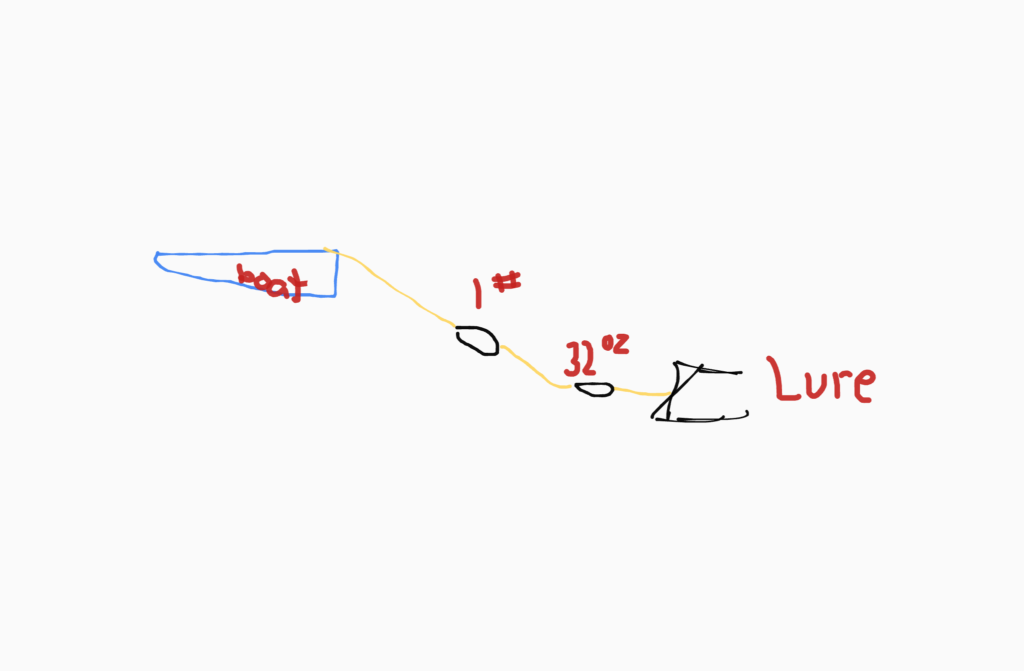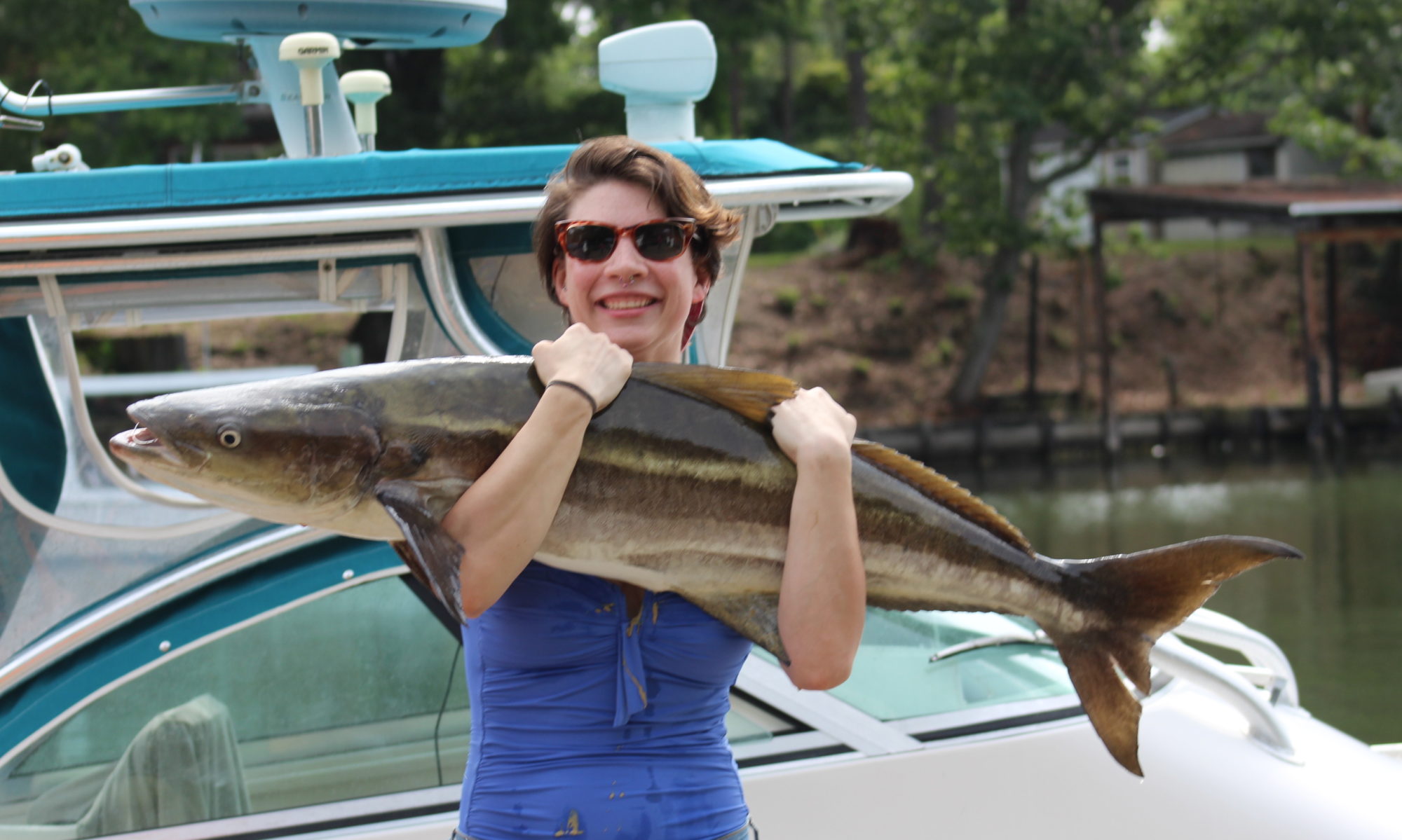Number 11 – Sonar, getting to know your particular sonar is just as important as going out and buying the latest or greatest new gadget. Choose the correct frequency for your purpose. For Striper I like to use the lower freq because as you are moving more slowly it actually improves detail as opposed to say Spanish where I bump it up to my highest setting because of how fast you are trolling. How fast your screen moves dictates how far behind the boat you are seeing the history of the water column. Learn this important feature as soon as you can because you can then understand when the fish is likely to strike and when to change speed etc of the boat. If yours has the option of combining both high and low freq it is kinda as close to perfect as you can get. Gain, run it as high as you can so long as you are not getting feedback. Sometimes putting the system in manual mode is far better but you need to be comfortable with the system before you get too advanced. Color, if you don’t love the color red you will likely not be happy but the more red the mark the more solid the fish and likely bigger as well.
Number 12 – Weights Size. How much is the correct amount. Well before we get there you need to understand how the entire rig changes the dynamics of how deep it will go as opposed to only weight. Just as a for instance planners don’t weigh much but the shape they are drive them down pretty deep pretty quickly. So if you have something streamlined it may not take as much weight to get it where you want it as opposed to say an umbrella rig that tends to fly in the water. Also, for things like umbrellas the umbrella itself has a weight as does the lure you tie in so all of those add to the account. How far back you run and at what speed also changes the mix. At some point you just have to hit bottom enough while knowing how deep that bottom is to know how deep you are actually running. Logging that combination you will start to see a trend.
Number 13 – Weights Location. Of course this also depends on what kind of rig you are running but here is my general rules of thumb. For umbrellas I usually hook the weight directly to the umbrella with no leader. For Tandems I have a heavier of the two on a six foot leader and the lighter of the two on a separate leader back at least four more feet. For singles I will often put them in a three way heavy teardrop say 32 – 48 ounce where the weight will bounce on the bottom with a 3 foot leader to the weight and then a 6 foot leader back to whatever I am fishing.
Number 14 – Weights shape. For trolling I like the cigar shaped weights but will settle for the standard inline weights. I wouldn’t go out to buy more just because they are not a specific shape but if you are trying to get your overall score up the cigar shape makes less interference and are likely more invisible to the fish. I just talked about the teardrop type for bouncing and for tandems I like the ones that already have the 3 way swivel connected.
Number 15 – Knots, well here we go again with completely my opinion but I like the Uni-Knot most for all uses. I lost a ton of gear over the years tying the various other knots. I went to Green Top to even change my line because I thought it was breaking. The person behind the counter convinced me it was my knot tying skills. Now without question the line I was using which was braid is certainly more finicky than other types but the uni knot on every instance has never failed. I go to this site for all my knot tying information.
Number 16 – Line types, I use braided, fluorocarbon, and mono, they all have their uses and they are all usable in the correct place. Braid is strong but rigid, takes up very little space on the reel so you can spool a lot of yards on a small reel. Mono has been around a ton of years and is very dependable in most applications. Mono has a bit of give not like a leader but enough not break at an instant pull. Fluro is similar to mono looks but is great because it is virtually invisible to the fish so in high light days you are more likely to catch fish than with mono. Fluro certainly costs more so I tend to buy it as leader rather than spool up a reel.
Number 17 – Leader types, mono, fluorocarbon, and wire are the main ones to discuss. Now I am talking about dedicated purchased leader and not just reeling off some spool you have in the box. Dedicated leader is purpose built to stretch with just a few feet which is great when you have a 20# leader and 50# main line. That stretch in the leader will land you more fish than just adding a 20# mono line that is designed to stretch at great lengths but not short lengths like you would be adding to a main line.
Number 18 – Bait Size, another controversial subject that I fall into the camp of the smaller of the two sizes you are thinking of is likely the best. “Match the hatch” is a well known phrase that all good fishermen live by which means what size is the bait the stipers eating should be an indication of what size bait they are looking for. So if you catch one, open him up and look at what is in his stomach. If it is a 5 inch bunker then put on 5 inch swim baits. I also like the saying that “Elephants eat peanuts” meaning fish will eat something smaller than they are searching for more often than something bigger. I have everything from 12 inch swim to 3 inch. Anymore I usually am at 5 leaning towards the 3 inch version.
Number 19 – Crippled Alewive vs. Rapala, Well I like them both when fishing is slow while trolling. You can add either one way back behind your other rigs and let it just be there. I have definitely caught some of the biggest fish I have landed using both of this lures. Many people don’t like them and most try to use more than one at a time. Having two is like having wives, one is great, two is completely destined for failure.
Number 20 – The deadman of we affectionately call it the Joe line. Wow what a system. I am adding a pic because most of you will just lose your mind. But, my buddy Virgil confessed after one day of fishing that when he got home he was going to throw away all of his rod-n-reels. That is just how good this system works.
The deadman is a series of weights you just tie one end to the lure (usually an umbrella rig) and the other to the boat. So you have 25 feet of rope to a 1 or 2 pound inline weight to 25 feet of 100# mono to a 32 oz inline weight to 25 feet of 100# mono to a swivel hook. I
I think this thing works so well because it is deep under the boat directly under the prop wash. It is a tremendous weapon in the tool chest.

